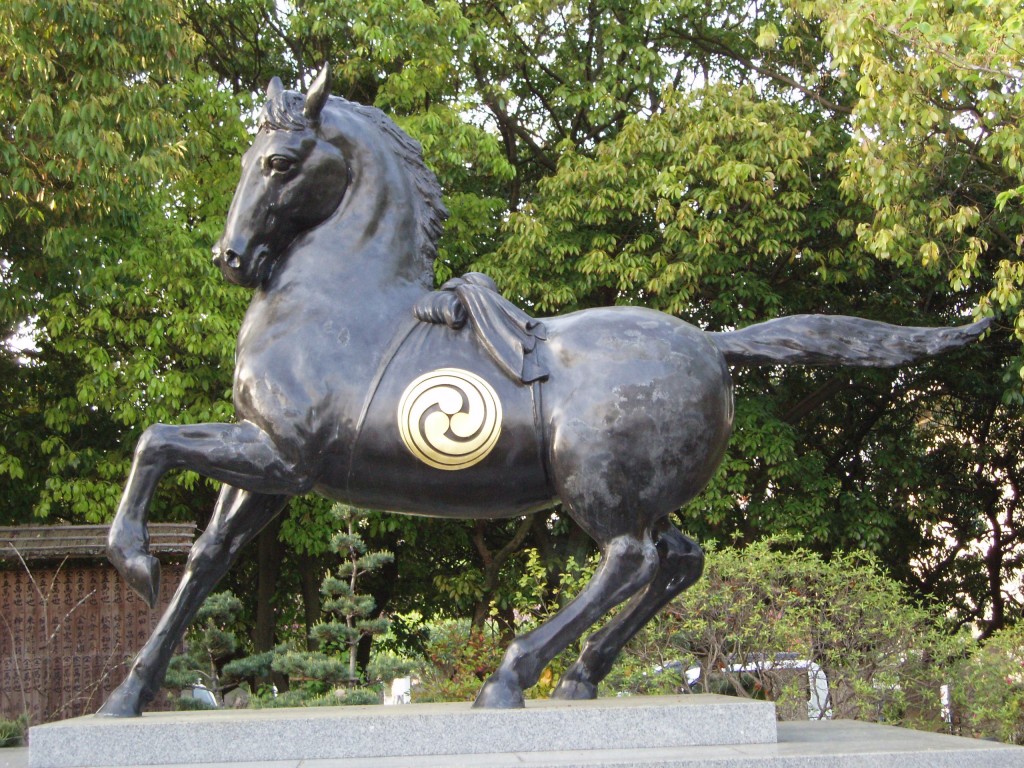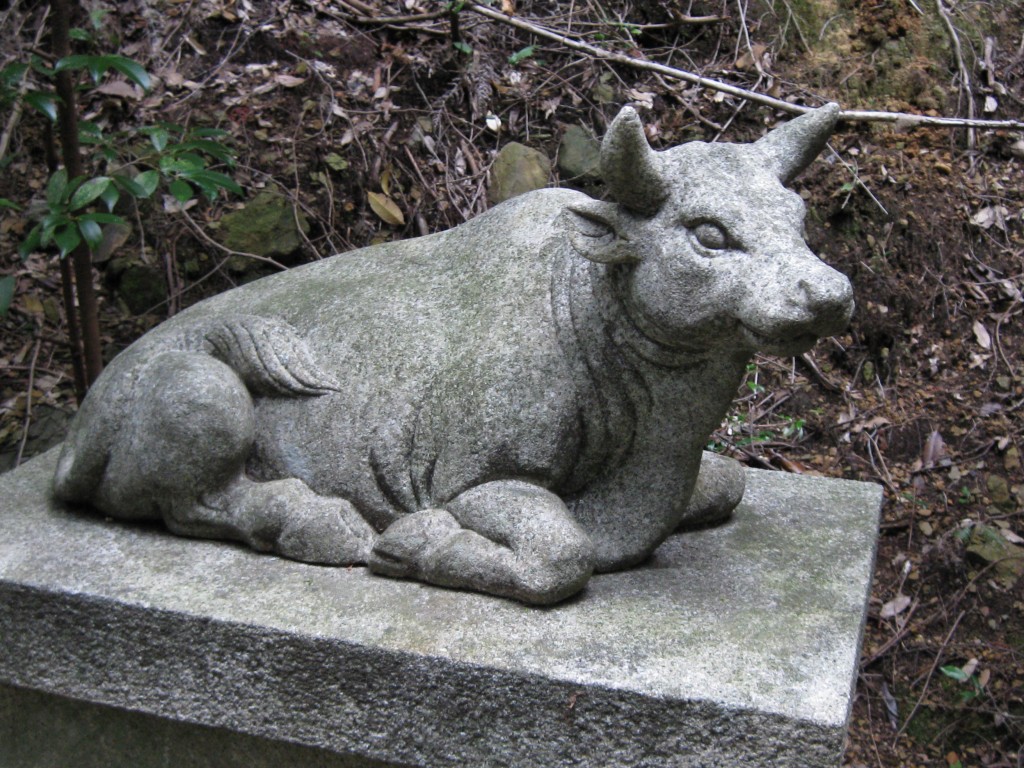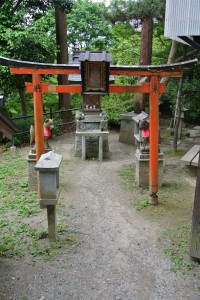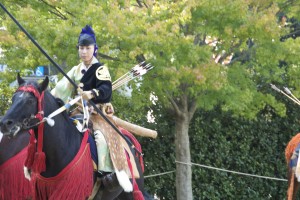
A horse statue, characteristic of Hachiman shrines
japan-guide.com is an excellent resource, which I often use when making travelling plans. I happened to come across a useful page while looking through the site, which gives a simple overview of some shrine types for visitors to Japan. There are several others that could be added to the list, such as Konpira, but this is a good introduction to the subject.
******************************************************************
There are tens of thousands of shrines across Japan, some of which can be categorized into a few major groups of shrines. Some of these groups are:
Imperial Shrines
These are the shrines which were directly funded and administered by the government during the era of State Shinto. They include many of Shinto’s most important shrines such as the Ise Shrines, Izumo Shrine and Atsuta Shrine, and a number of shrines newly built during the Meiji Period, such as Tokyo’s Meiji Shrine and Kyoto’s Heian Shrine. Imperial shrines can be recognized by the imperial family’s chrysanthemum crest and by the fact that they are often called “jingu” rather than “jinja”.
Inari Shrines
Inari Shrines are dedicated to Inari, the kami of rice. They can be recognized by fox statues, as the fox is considered the messenger of Inari. There are thousands of Inari Shrines across Japan, among which Kyoto’s Fushimi Inari Shrine is most famous.
Hachiman Shrines
Hachiman Shrines are dedicated to Hachiman, the kami of war, which used to be particularly popular among the leading military clans of the past. Of Japan’s thousands of Hachiman Shrines, the most famous is probably Kamakura’s Tsurugaoka Hachimangu.
Tenjin Shrines
Tenjin Shrines are dedicated to the kami of Sugawara Michizane, a Heian Period scholar and politician. They are particularly popular among students preparing for entrance exams. Tenjin Shrines can be recognized by ox statues and plum trees, Michizane’s favorite trees. The first and most famous Tenjin Shrine is Dazaifu Tenmangu near Fukuoka.
Sengen Shrines
Sengen Shrines are dedicated to Princess Konohanasakuya, the Shinto deity of Mount Fuji. More than one thousand Sengen Shrines exist across Japan, with the head shrines standing at the foot and the summit of Mount Fuji itself.
Shrines dedicated to the founders of powerful clans
Some powerful clans in Japanese history established and dedicated shrines to the their clans’ founders. The most famous example are the several dozens of Toshogu Shrines dedicated to Tokugawa Ieyasu, including the famous Toshogu Shrine at Nikko. Another example is Kanazawa’s Oyama Shrine which is dedicated to Maeda Toshiie, the founder of the powerful, local Maeda clan.
Local Shrines
Many shrines are dedicated to local kami without association to other shrines.

If you see this, you can be pretty sure it's a Tenmangu Shrine dedicated to the spirit of Sugawara Michizane aka Tenjin



Leave a Reply